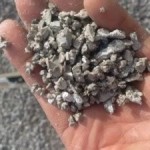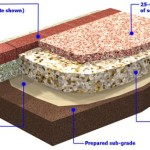Bedding Planes: Fundamental Markers in Earth's History
Bedding planes represent fundamental interfaces within sedimentary rock sequences. They mark the boundaries between different sedimentary beds, offering crucial insights into depositional environments, timelines, and Earth’s geological past. Understanding bedding planes is essential for interpreting stratigraphic relationships and reconstructing ancient environments.
Key Characteristics of Bedding Planes
* Represent pauses in sedimentation. * Often appear as relatively flat surfaces. * Can exhibit varying lateral extent. * Mark changes in sediment type or depositional conditions. * Provide a framework for stratigraphic correlation.
Formation of Bedding Planes
Bedding planes form due to interruptions or shifts in the process of sedimentation. These interruptions can be short-lived or last for extended periods, resulting in a discernible break in the rock record. Various factors contribute to the formation of bedding planes.
Factors Influencing Bedding Plane Development
* Changes in sediment supply: Fluctuations in the source of sediment can lead to variations in grain size, composition, or color, creating distinct bedding planes. * Sea level fluctuations: Rising or falling sea levels can expose sediments to erosion or create new depositional environments, resulting in bedding plane formation. * Tectonic activity: Earthquakes and other tectonic events can disrupt sedimentation patterns, leading to the development of bedding planes. * Currents and water flow: Changes in current strength or direction can influence sediment transport and deposition, creating bedding planes that reflect these changes. * Climate change: Variations in climate can impact weathering, erosion, and sediment transport, influencing the formation of bedding planes. * Biological activity: Burrowing organisms or the growth of microbial mats can modify sediment surfaces, creating subtle bedding planes.
Types of Bedding Planes
Bedding planes are classified based on their morphology and the processes that formed them. Recognizing different types is crucial for accurate geological interpretation.
Common Bedding Plane Types
* Parallel bedding: Characterized by flat, parallel bedding planes indicating uniform sedimentation in a stable environment. * Cross-bedding: Formed by inclined layers within a bed, often indicating deposition in flowing water or wind. * Graded bedding: Exhibits a gradual change in grain size within a bed, typically fining upwards, reflecting waning energy during deposition. * Ripple marks: Undulating surfaces on bedding planes formed by currents or waves. * Mud cracks: Polygonal cracks formed in mud as it dries, indicating subaerial exposure.
Significance of Bedding Planes in Geological Studies
Bedding planes provide a wealth of information that is invaluable for geological research. Their presence allows geologists to decipher Earth's history and understand past environmental conditions.
Applications of Bedding Plane Analysis
* Stratigraphic Correlation: Bedding planes serve as markers for correlating rock layers across different locations, allowing geologists to build regional stratigraphic frameworks. * Paleoenvironmental Reconstruction: The characteristics of bedding planes, such as grain size, sedimentary structures, and fossil content, reveal clues about past environments, including water depth, current energy, and climate. * Structural Geology: The orientation and deformation of bedding planes provide insights into tectonic events and the history of rock deformation. * Petroleum Geology: Bedding planes can act as barriers or conduits for fluid flow in subsurface reservoirs, playing a critical role in hydrocarbon exploration and production. * Geochronology: In some cases, bedding planes can be dated using radiometric techniques, providing age constraints for sedimentary sequences.
Bedding Plane Features and Interpretation
Careful examination of bedding plane features offers valuable information for geological interpretation. These features can be used to reconstruct past environments and understand the processes that shaped the rock record.
Key Bedding Plane Features
* Sole marks: Features preserved on the bottom surface of a bed, such as flute casts and tool marks, indicating current direction and flow regime. * Trace fossils: Preserved evidence of biological activity, such as burrows, tracks, and trails, revealing insights into ancient ecosystems. * Sedimentary structures: Features like ripple marks, cross-bedding, and mud cracks provide clues about the depositional environment and the energy of the transporting medium. * Color changes: Variations in sediment color across bedding planes can reflect changes in the source of sediment or diagenetic processes.
Challenges in Bedding Plane Interpretation
While bedding planes provide significant information, their interpretation can be complex. Factors such as erosion, diagenesis, and tectonic deformation can obscure or modify bedding plane features, requiring careful analysis and consideration of multiple lines of evidence.
Factors Affecting Bedding Plane Interpretation
* Erosion: Subsequent erosion can remove or partially obscure bedding planes, making correlation and interpretation challenging. * Diagenesis: Post-depositional processes, such as compaction and cementation, can alter the original characteristics of bedding planes. * Tectonic Deformation: Folding and faulting can disrupt bedding planes, making it difficult to reconstruct the original stratigraphic sequence. * Bioturbation: Intense burrowing activity can disrupt bedding planes, making it difficult to identify primary sedimentary structures.

Sepm Strata

Bedding And Lamination Geology Is The Way

Bedding Plane An Overview Sciencedirect Topics

Rocks 3 What Are Joints And Bedding Planes Is Rock Permeability Teleskola

Bedding Plane An Overview Sciencedirect Topics

Energy And Geology A Level Geography Edexcel Revision Study Rocket

Bedding Plane An Overview Sciencedirect Topics

Bed Geology Simple English Wikipedia The Free Encyclopedia

Sepm Strata

Plane Of Stratification Bedding Fracture Having Strike B Scientific Diagram
Related Posts








